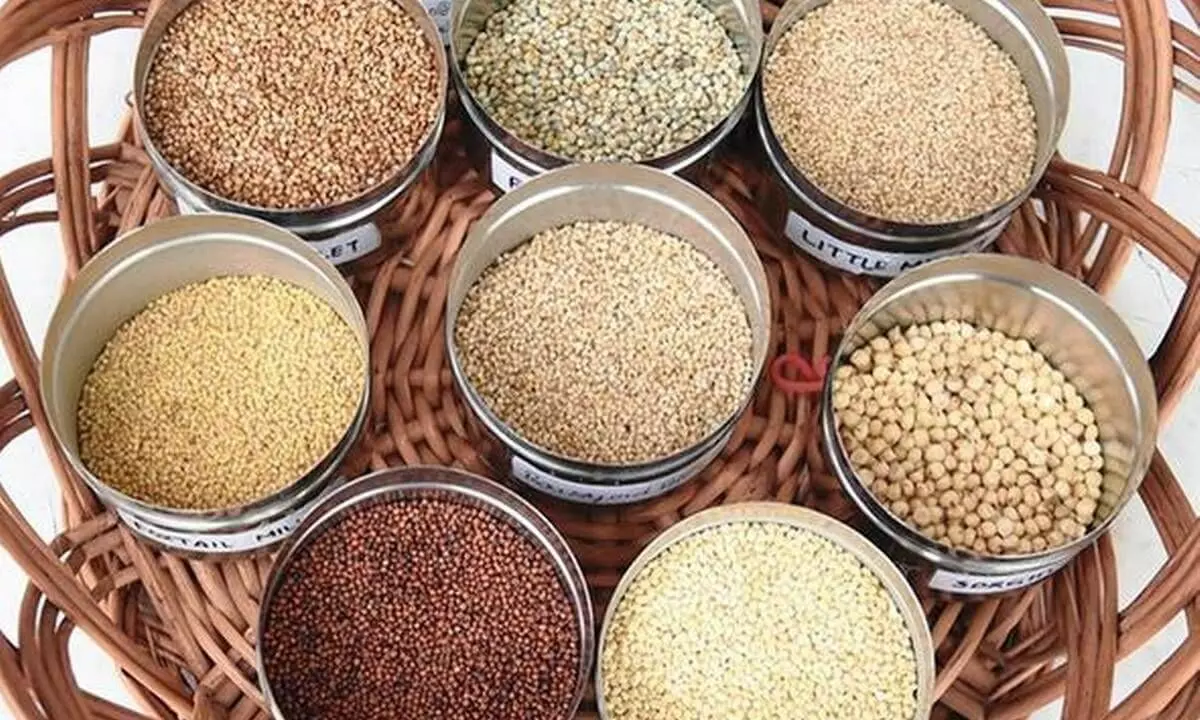UP plans to increase millet production
In order to promote production and consumption of millets, the Uttar Pradesh government is planning to replace around 17 per cent of the area under paddy (rice) cultivation with millets and oilseeds in the coming years.
image for illustrative purpose

Lucknow, March 23 In order to promote production and consumption of millets, the Uttar Pradesh government is planning to replace around 17 per cent of the area under paddy (rice) cultivation with millets and oilseeds in the coming years.
Uttar Pradesh is the second largest producer of rice in the country (15 million MT), has 60 lakh hectares of land under paddy cultivation across 70 districts.
The state government plans to reduce this to 50 lakh hectares while getting the area reallocated for millets and oilseeds -- a move that could mark a radical change in the cropping pattern.
According to official sources, the change would be brought through concerted and extensive campaigns among farmers.
Experts say that millets are most suited for water deficit and drought conditions. It consumes at least 70 per cent less water than other crops and requires minimum inputs and almost no pesticide.
"For farmers, millets are low risk crops resilient to climate change," a senior official said.
With 11 lakh hectares of land under millets, UP also happens to be the second largest producer of coarse grain (50 lakh MT).
Sources said that the government is planning to organise cluster demonstrations, area expansion through distribution of common seed and free seed mini-kit.
The government also plans to increase area under oilseeds from the existing 22 lakh hectares to around 27 lakh hectares to meet the target of producing 100 lakh tonnes of oilseeds by 2030-31.
For this, the productivity will have to be increased from 11 to 12.5 quintals per hectare.
Officials said that the state government was also planning to promote 'exotic' varieties of rice which could have higher returns.
The data available with the agriculture department shows that only seven districts (Bijnor, Kushinagar, Pilibhit, Chandauli, Baghpat, Varanasi and Ambedkar Nagar) have high productivity (over 2,500 kg/hectare).
As many as 55 districts have medium (2000-2500 kg/hectare) or medium-low productivity (1,500-2,000 kg/hectare). Five and three districts have low and very low productivity, respectively.
Rice production has been registering downward fluctuation in the wake of lesser rainfall.
Last year, rice production came down nationally from 111 million MT in 2021 to around 105 million MT in 2022.
The state reported to have received 42 per cent less rainfall last year and recorded acreage under rice going down by around 2.5 lakh hectares.
According to experts, the plan falls in line with the state government's concerted efforts to promote millets which has been the focus of the Narendra Modi government at the Centre.
The year 2023 is also being observed as the International Year of Millets.

